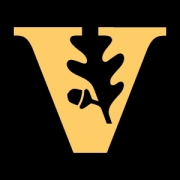Genetic Susceptibility and Risk of Second Cancers in Patients Who Have Undergone Stem Cell Transplant for Cancer
| Status: | Terminated |
|---|---|
| Conditions: | Cancer, Cancer, Other Indications, Lymphoma |
| Therapuetic Areas: | Oncology, Other |
| Healthy: | No |
| Age Range: | Any |
| Updated: | 8/18/2018 |
| Start Date: | January 2009 |
| End Date: | February 2018 |
Radiation Sensitivity, DNA Repair, and Second Cancers.
RATIONALE: Identifying genes that increase a person's susceptibility to second cancers may
help the study of cancer treatment.
PURPOSE: This study is looking at genetic susceptibility and risk of second cancers in
patients who have undergone stem cell transplant for cancer.
help the study of cancer treatment.
PURPOSE: This study is looking at genetic susceptibility and risk of second cancers in
patients who have undergone stem cell transplant for cancer.
OBJECTIVES:
Primary
- Determine whether genetic susceptibility (e.g., inherited differences in radiation
sensitivity to normal tissue or genes of xenobiotic metabolism, nucleotide provision, or
DNA repair) to the carcinogenic effects of radiotherapy, tobacco, and UV light modifies
the risk of second malignant neoplasms (SMN) in patients with cancer treated with
hematopoietic stem cell transplantation (HSCT).
Secondary
- Measure inherent sensitivity to radiotherapy via G_2 chromosome radiation sensitivity
assay using B-cell lymphoblastoid cell lines derived from pre-HSCT cryopreserved
peripheral blood mononuclear cells of patients with and without SMN.
- Measure the frequency of allelic variants of genes involved in xenobiotics metabolism,
DNA repair, and provision of nucleotide pool and compare the frequencies among patients
with and without SMN, determine the transmission of specific alleles of these genes from
parents to patients, and correlate allelic variants of DNA repair and nucleotide
provision in genes with in vitro radiation sensitivity.
- Evaluate the role of potentially carcinogenic environmental exposures (tobacco and sun
light) pre- or post-HSCT in the risk of SMN and examine the association of these
exposures with SMN and the interaction of these exposures with allelic variants of genes
involved in xenobiotic metabolism, nucleotide provision, and DNA repair.
OUTLINE: Patients complete self-reported questionnaires and medical records are reviewed to
collect information on UV light and tobacco exposure pre- and post-transplantation.
Information is analyzed for association with second malignancy neoplasms.
Blood samples are collected from patients pre-hematopoietic stem cell transplantation and
from their parents (when available) or other first-degree relatives for genetic biomarkers of
susceptibility to second malignancies, DNA repair and provision nucleotide, genetic
susceptibility to toxicity from combined cancer therapies, and environmental carcinogens.
PROJECTED ACCRUAL: A total of 1,000 patients (800 patients without second malignant neoplasms
[SMN] and 200 patients with SMN) will be accrued for this study.
Primary
- Determine whether genetic susceptibility (e.g., inherited differences in radiation
sensitivity to normal tissue or genes of xenobiotic metabolism, nucleotide provision, or
DNA repair) to the carcinogenic effects of radiotherapy, tobacco, and UV light modifies
the risk of second malignant neoplasms (SMN) in patients with cancer treated with
hematopoietic stem cell transplantation (HSCT).
Secondary
- Measure inherent sensitivity to radiotherapy via G_2 chromosome radiation sensitivity
assay using B-cell lymphoblastoid cell lines derived from pre-HSCT cryopreserved
peripheral blood mononuclear cells of patients with and without SMN.
- Measure the frequency of allelic variants of genes involved in xenobiotics metabolism,
DNA repair, and provision of nucleotide pool and compare the frequencies among patients
with and without SMN, determine the transmission of specific alleles of these genes from
parents to patients, and correlate allelic variants of DNA repair and nucleotide
provision in genes with in vitro radiation sensitivity.
- Evaluate the role of potentially carcinogenic environmental exposures (tobacco and sun
light) pre- or post-HSCT in the risk of SMN and examine the association of these
exposures with SMN and the interaction of these exposures with allelic variants of genes
involved in xenobiotic metabolism, nucleotide provision, and DNA repair.
OUTLINE: Patients complete self-reported questionnaires and medical records are reviewed to
collect information on UV light and tobacco exposure pre- and post-transplantation.
Information is analyzed for association with second malignancy neoplasms.
Blood samples are collected from patients pre-hematopoietic stem cell transplantation and
from their parents (when available) or other first-degree relatives for genetic biomarkers of
susceptibility to second malignancies, DNA repair and provision nucleotide, genetic
susceptibility to toxicity from combined cancer therapies, and environmental carcinogens.
PROJECTED ACCRUAL: A total of 1,000 patients (800 patients without second malignant neoplasms
[SMN] and 200 patients with SMN) will be accrued for this study.
Inclusion Criteria:
CASES are those who:
- Survived at least 100 days post-hematopoietic stem cell transplantation (HSCT).
- Developed an SMN after that time point.
- And received TBI as part of the preparative regimen.
CONTROLS are randomly selected:
- In a 4:1 ratio to cases from the same cohort of 100 day + survivors of HSCT who
received TBI.
- Controls will be matched to the cases by race and primary diagnosis.
- In addition, they must have survived for at least the elapsed time between the case's
HSCT and the secondary cancer, without development of an SMN.
- We are matching on primary diagnosis, as genotype or radiation sensitivity may
predispose to specific primary cancers, as well as the SMNs.
- We are matching on race, as allele frequencies vary widely across ethnic groups.
Exclusion Criteria:
- Did not survive at least 100 days post-hematopoietic stem cell transplantation (HSCT).
- Did not develop an SMN after that time point.
- Did not receive TBI as part of the preparative regimen.
We found this trial at
1
site
Vanderbilt-Ingram Cancer Center The Vanderbilt-Ingram Cancer Center, located in Nashville, Tenn., brings together the clinical...
Click here to add this to my saved trials
